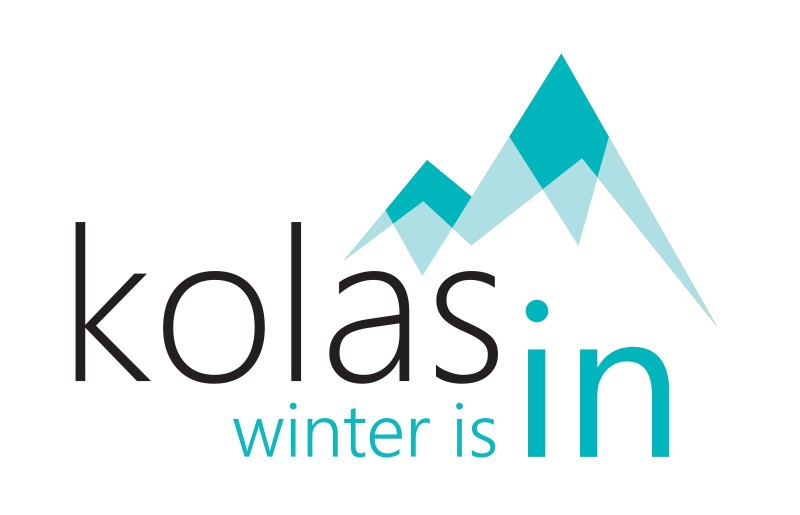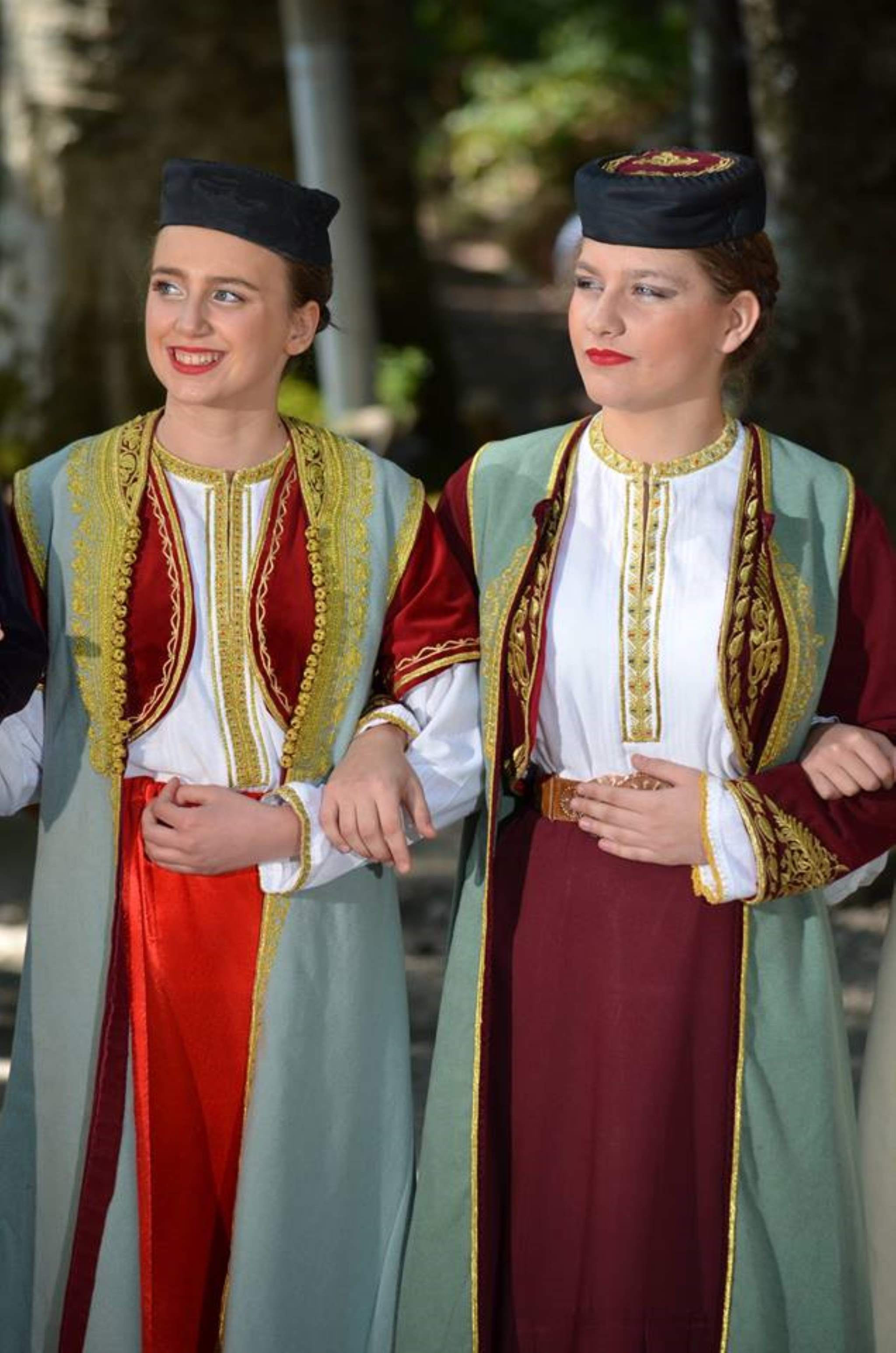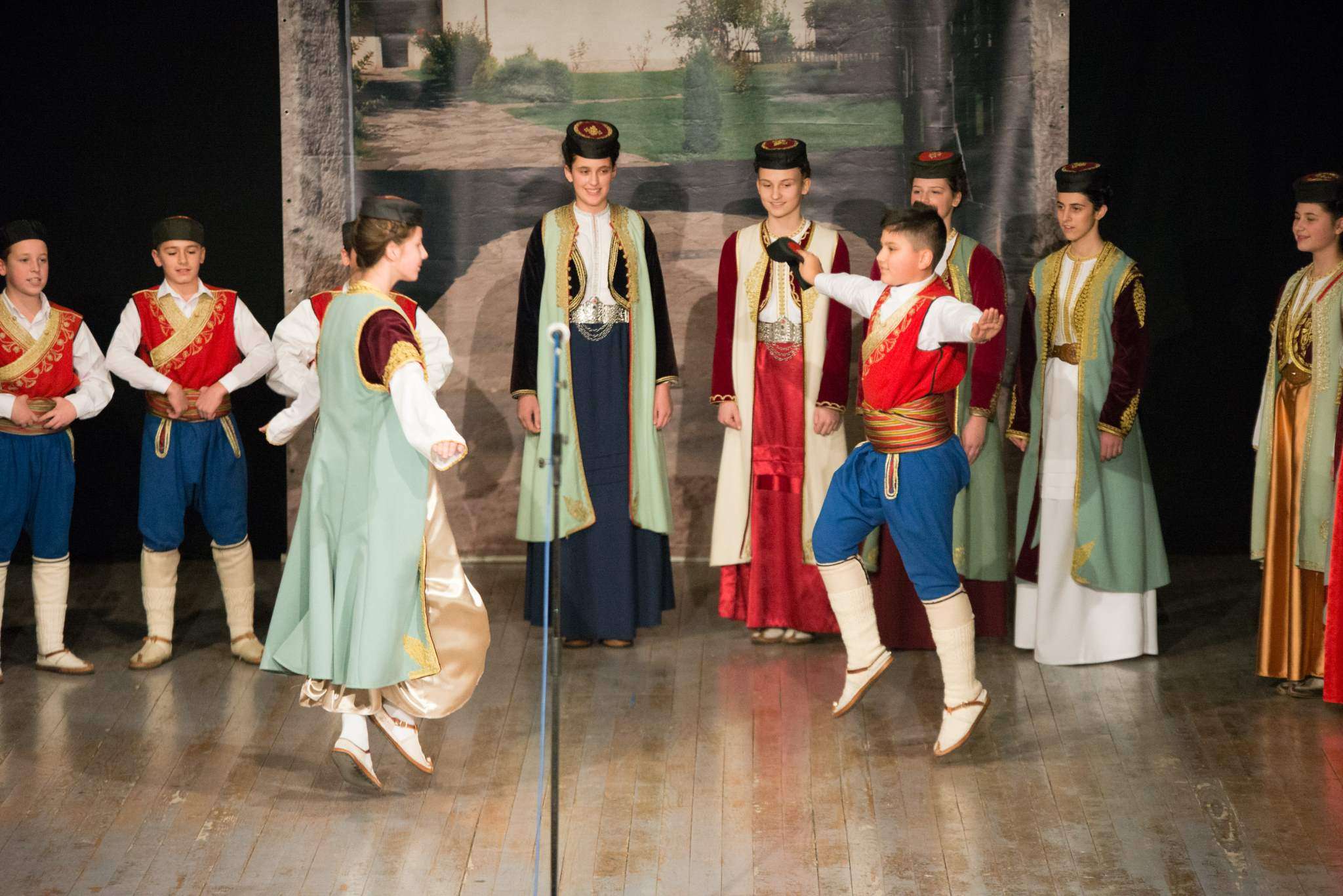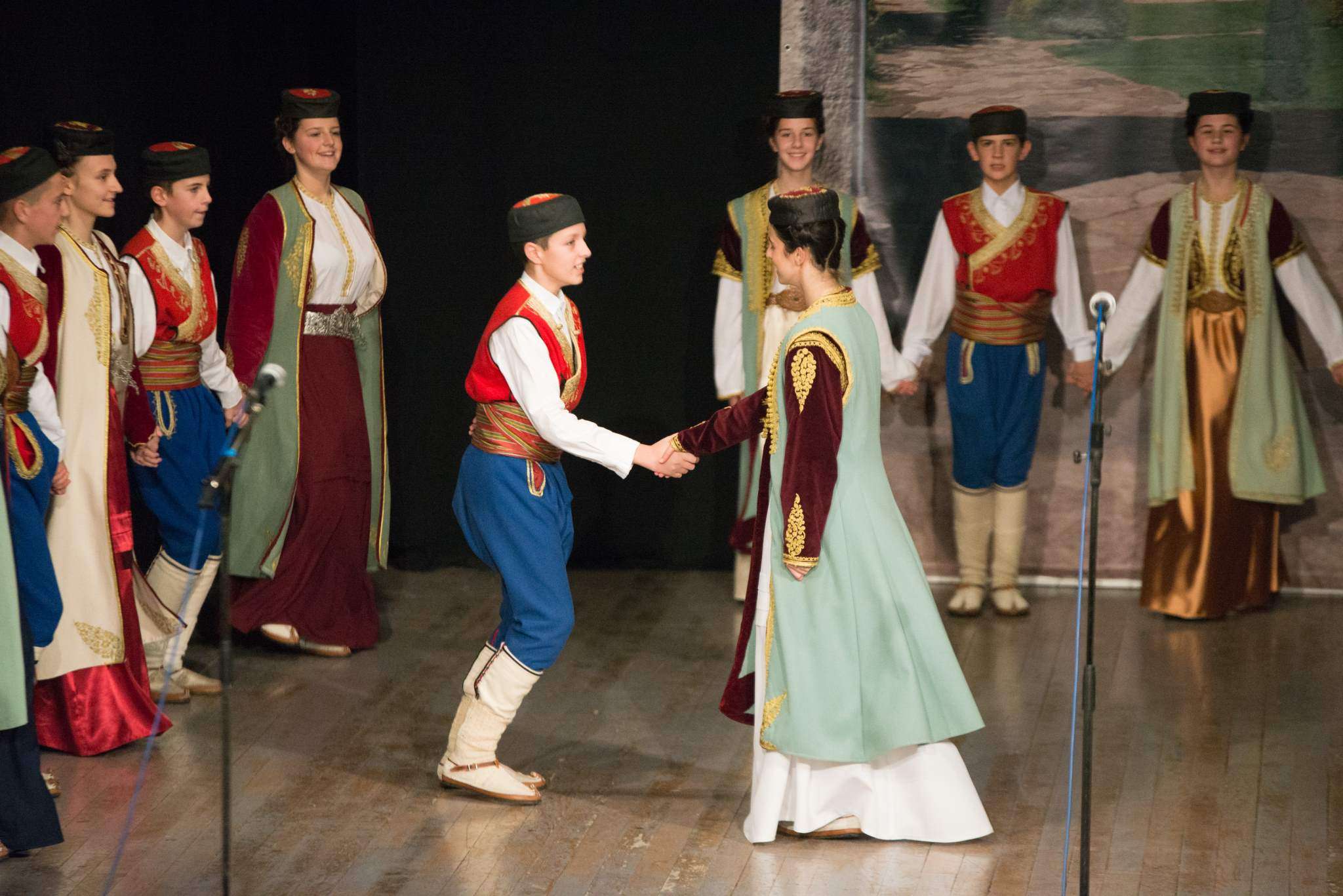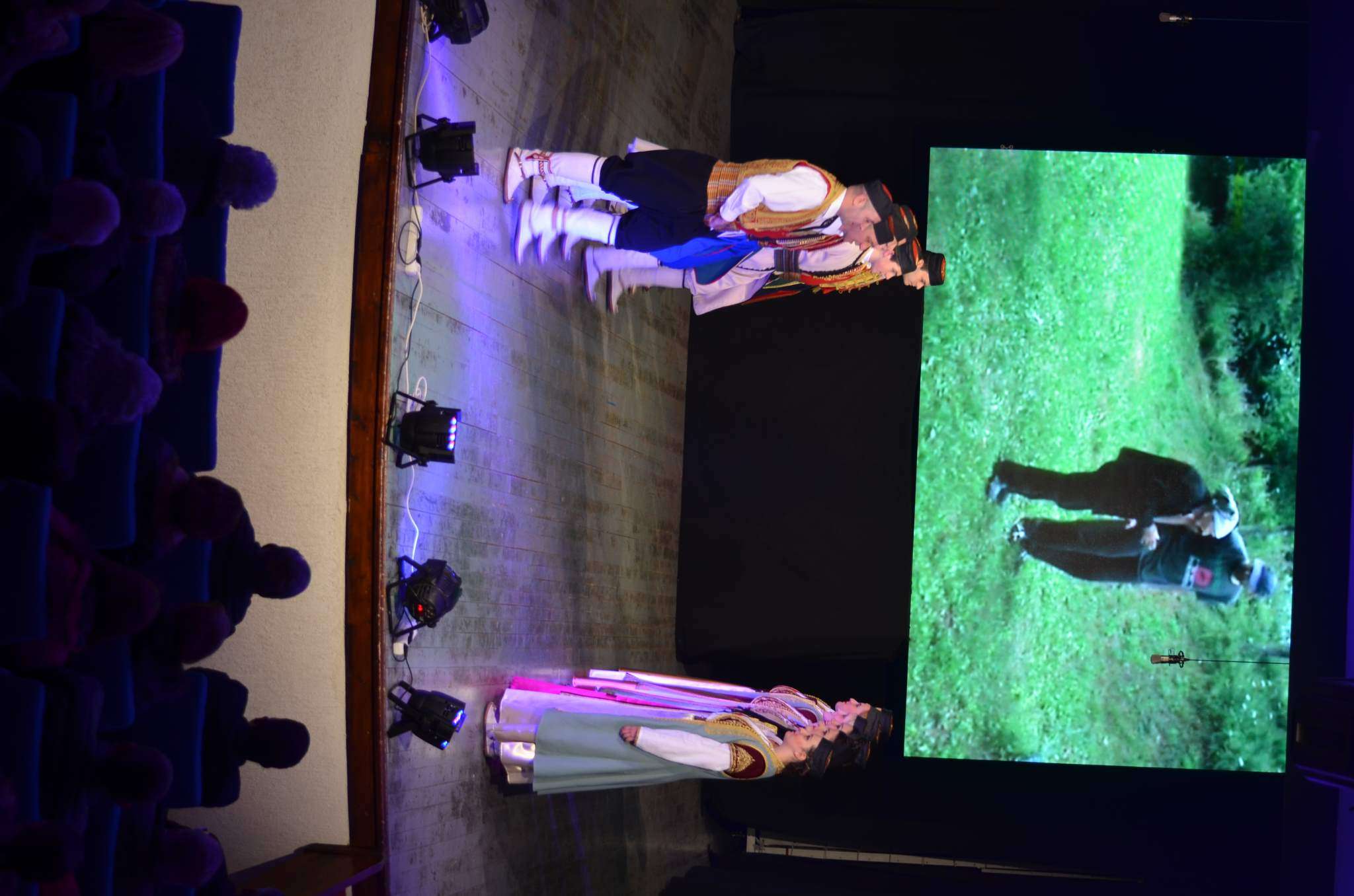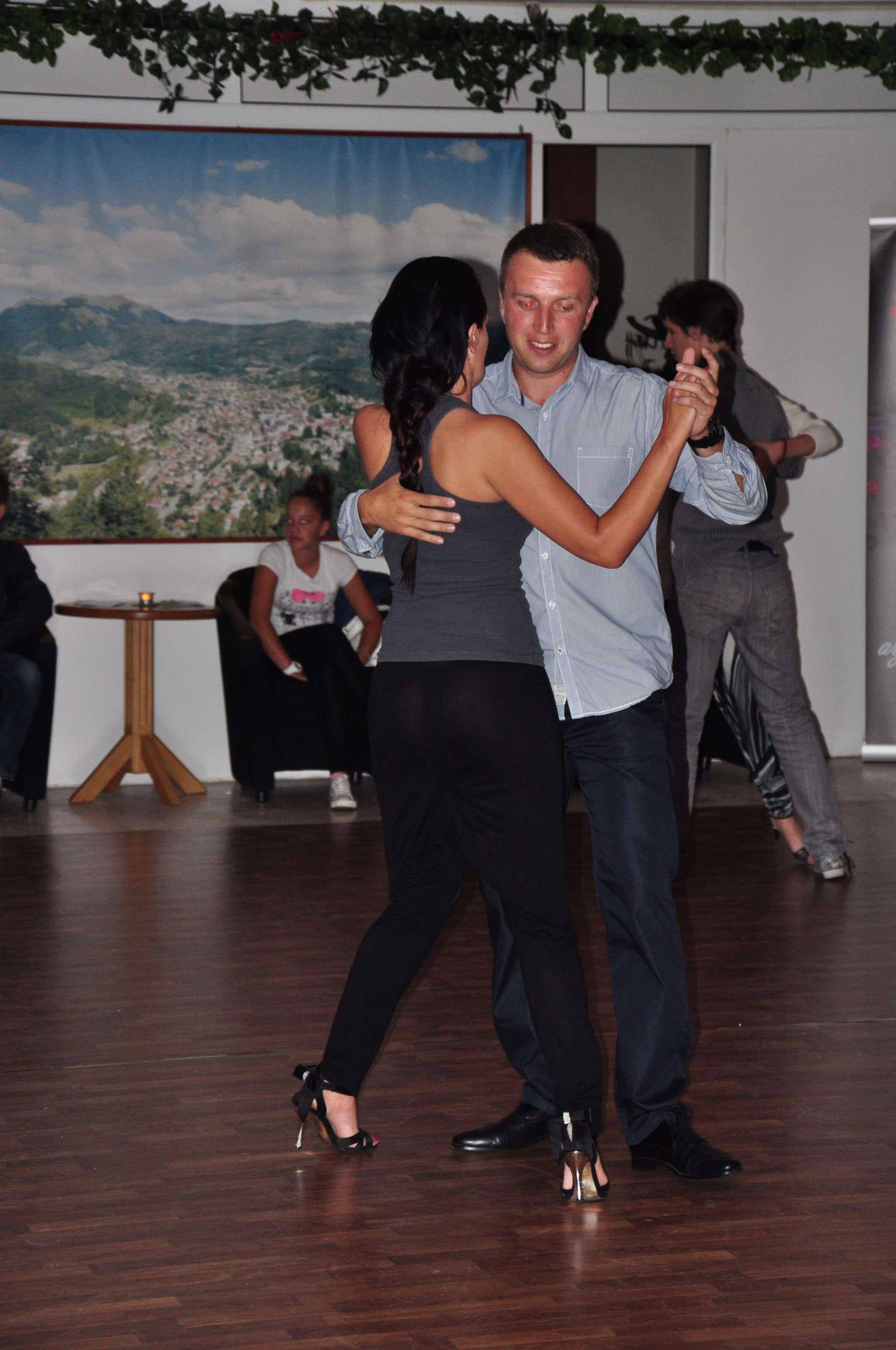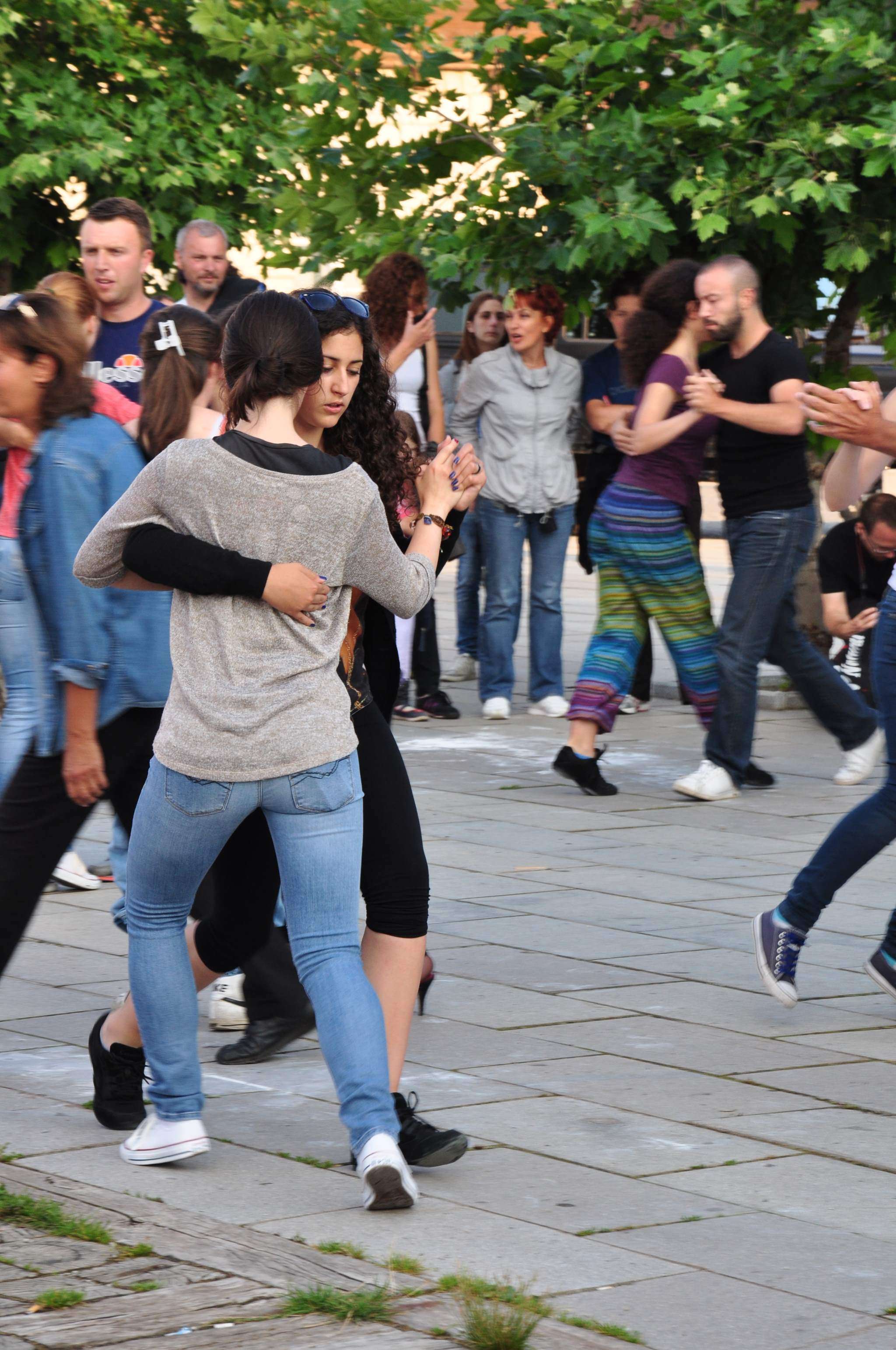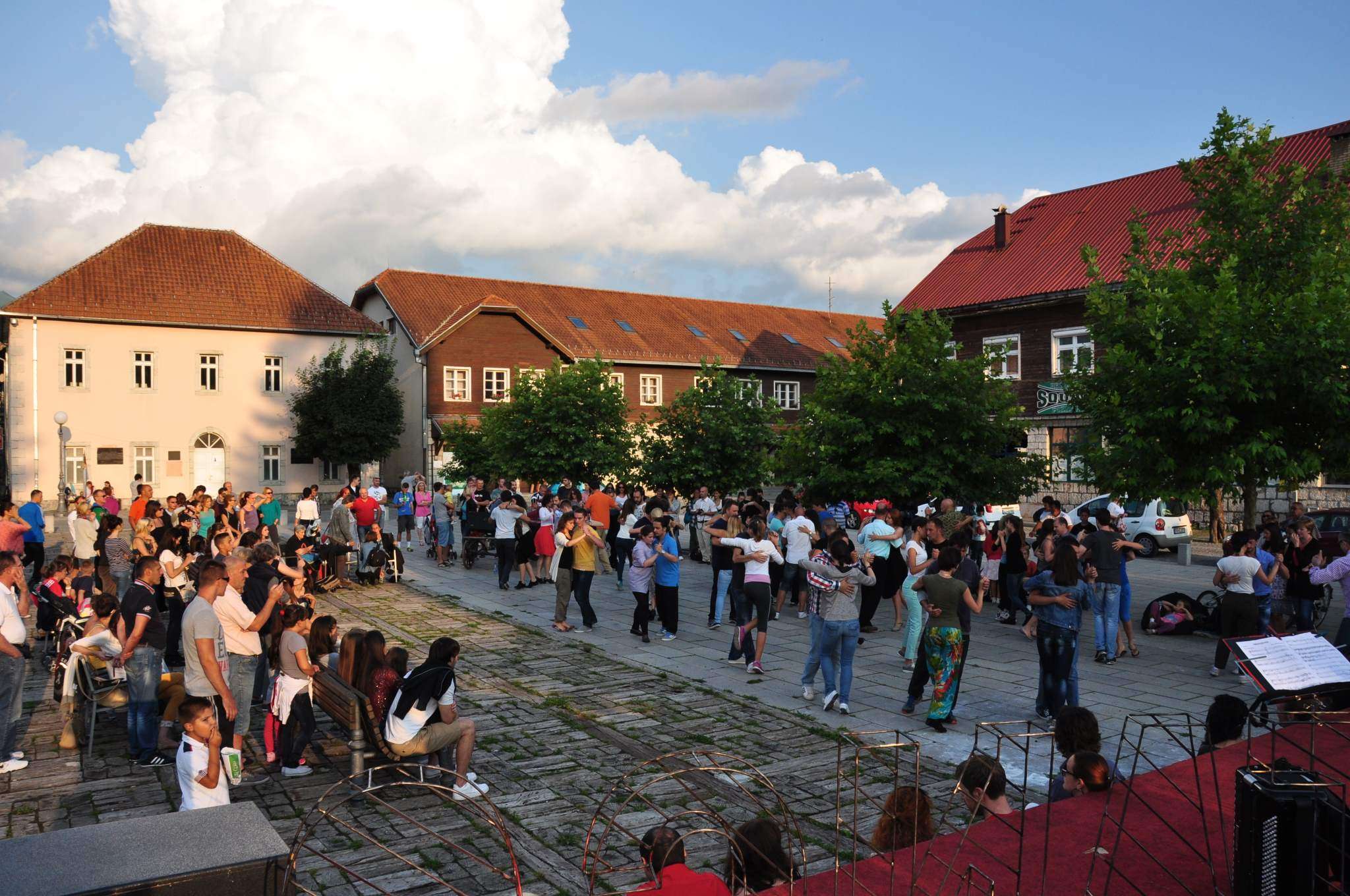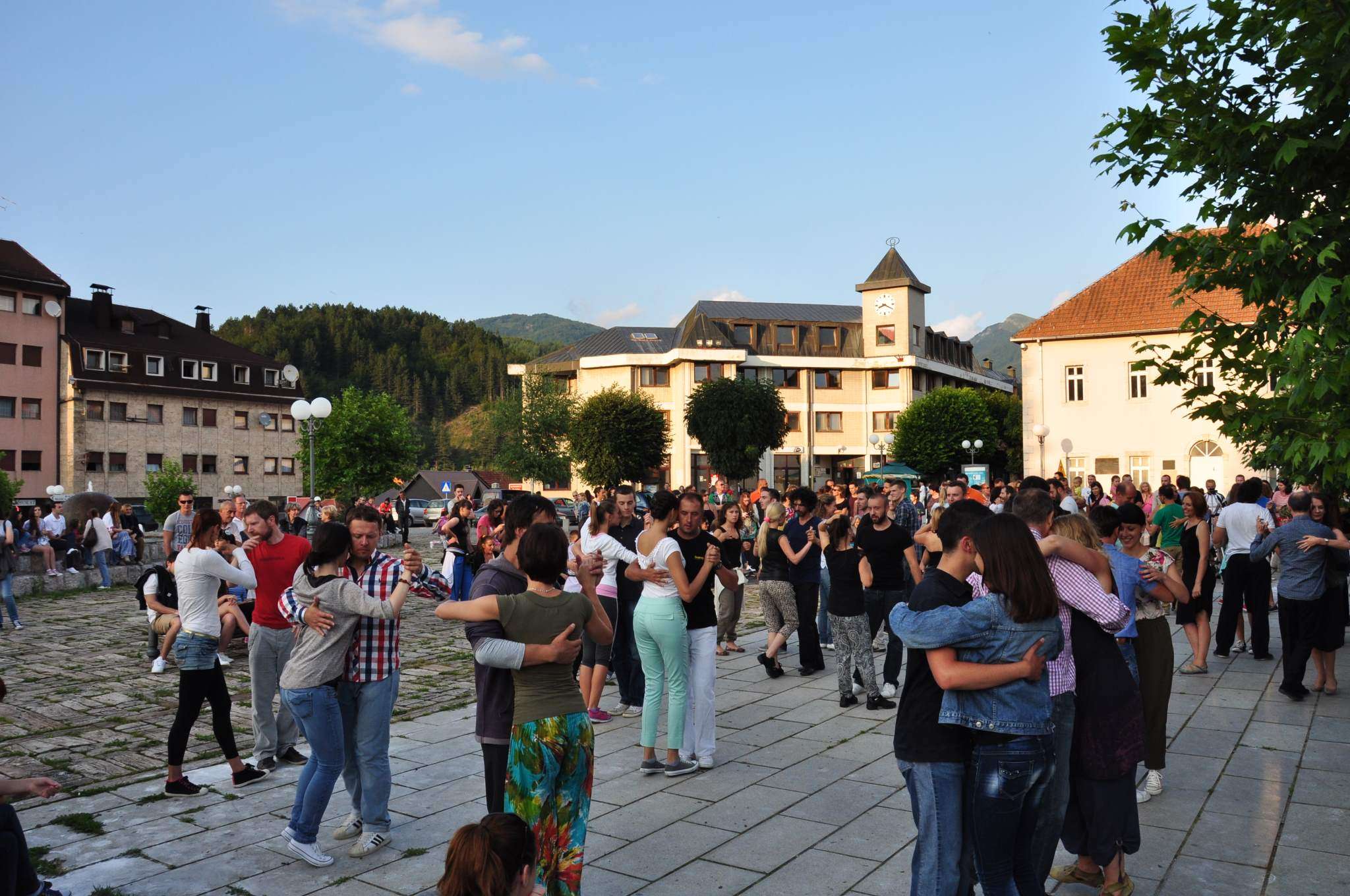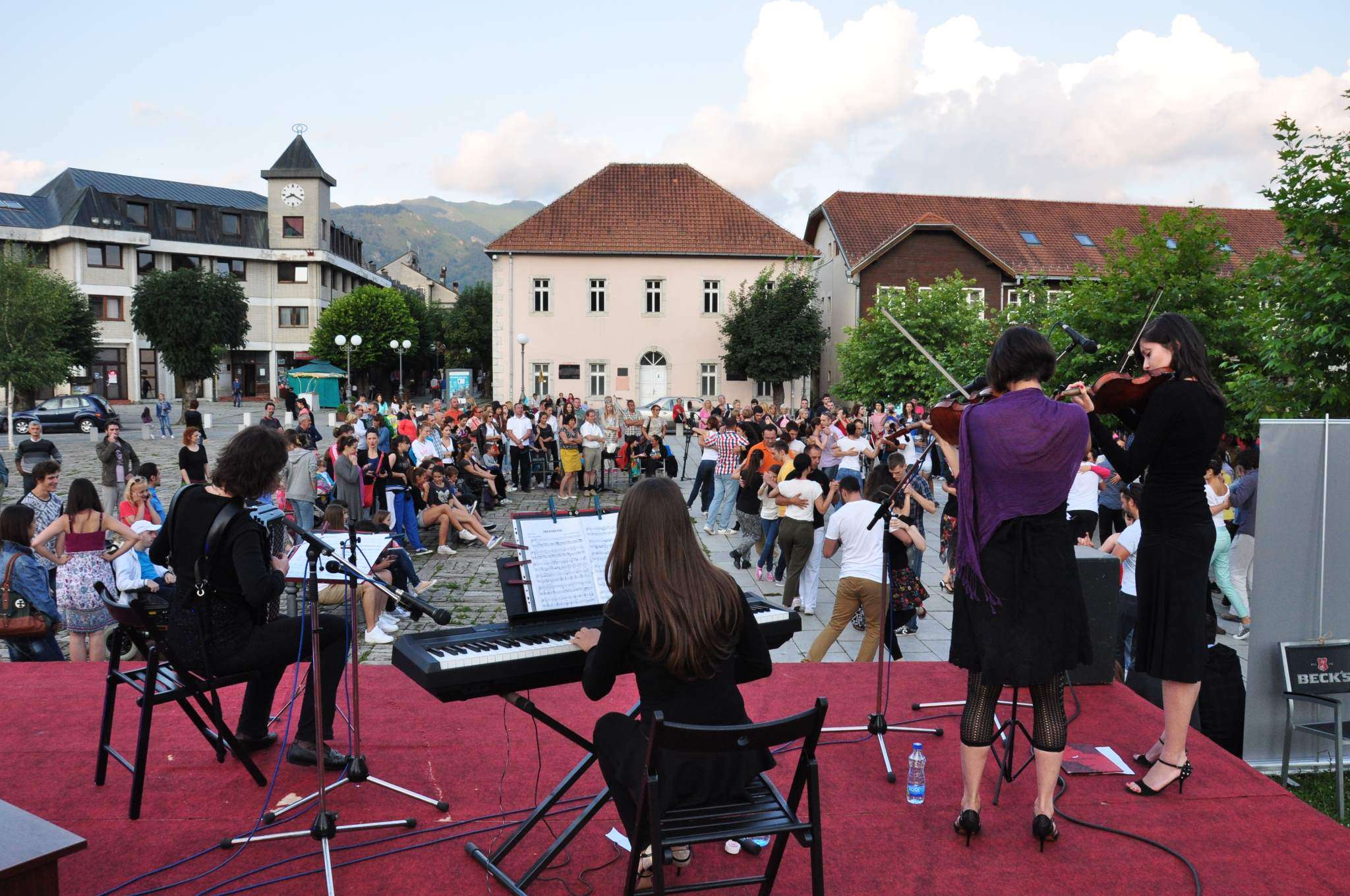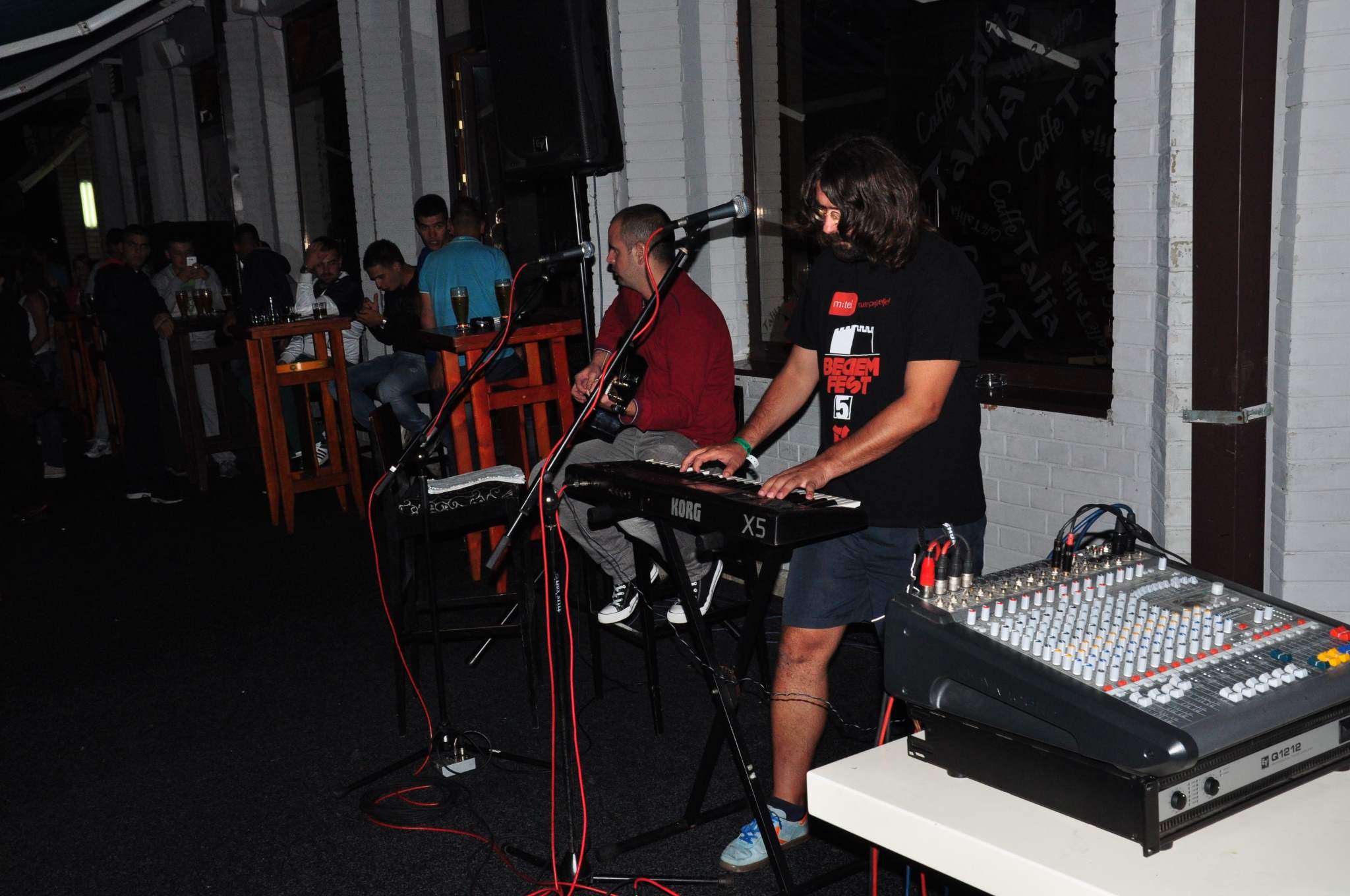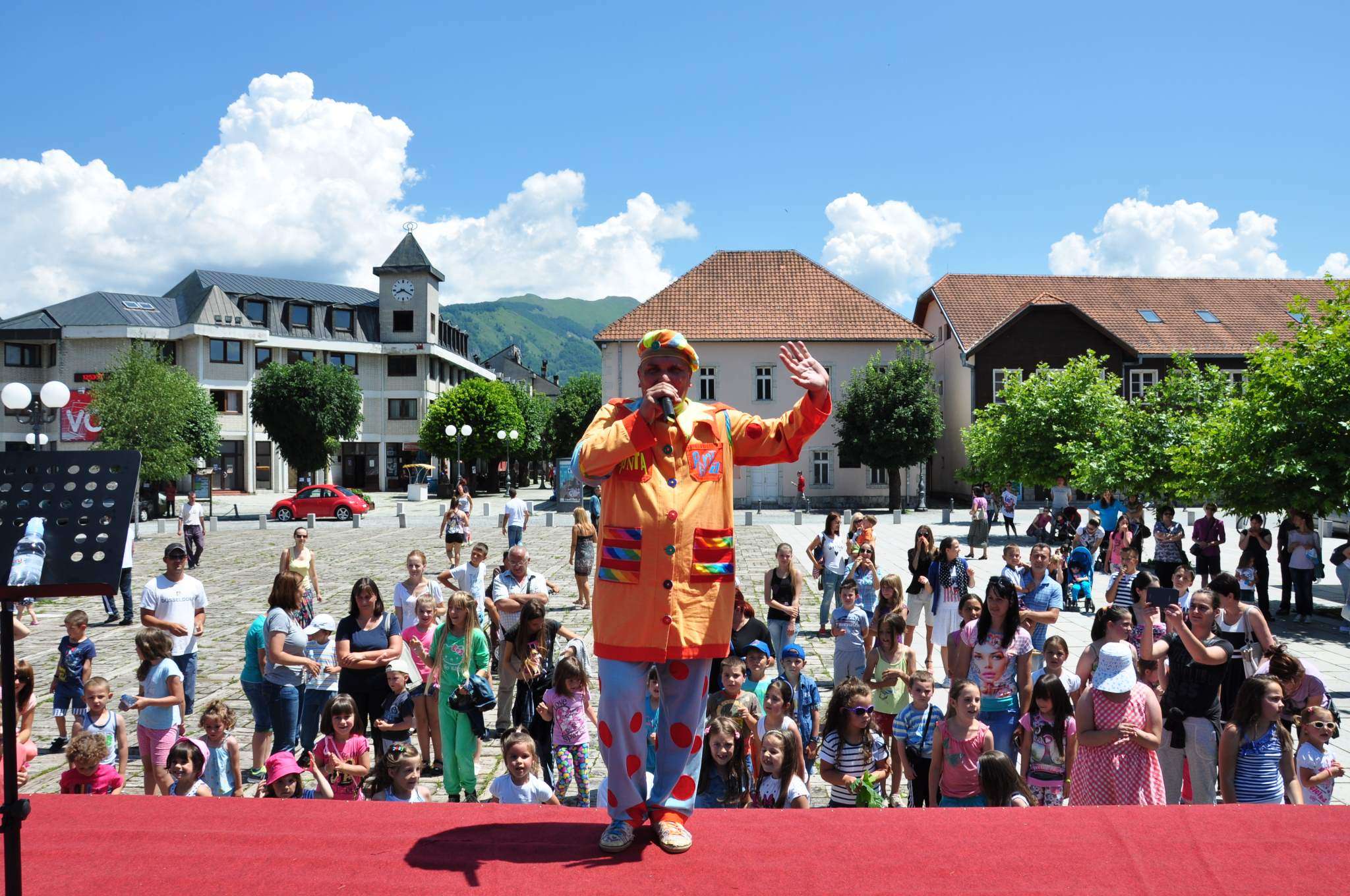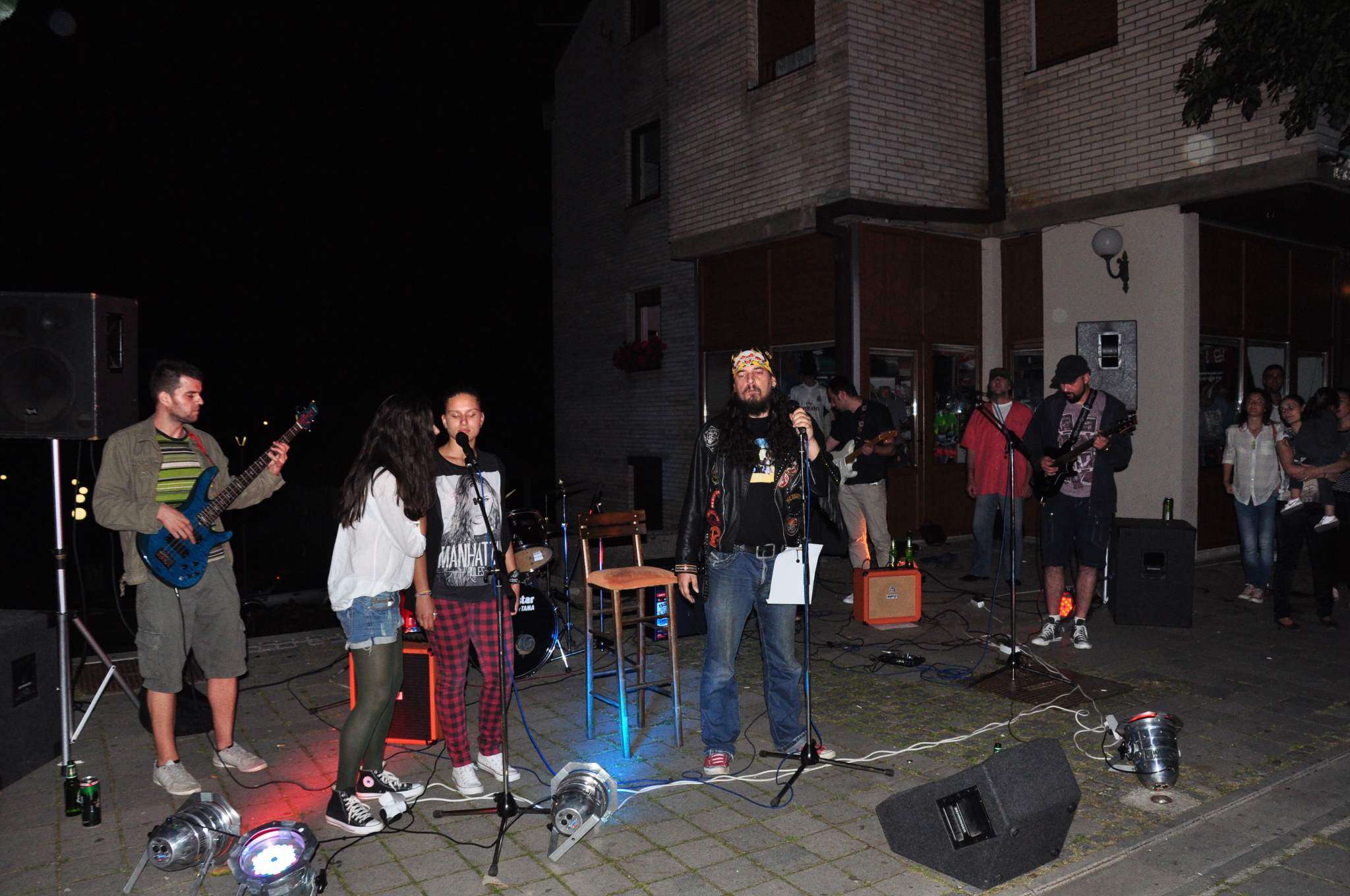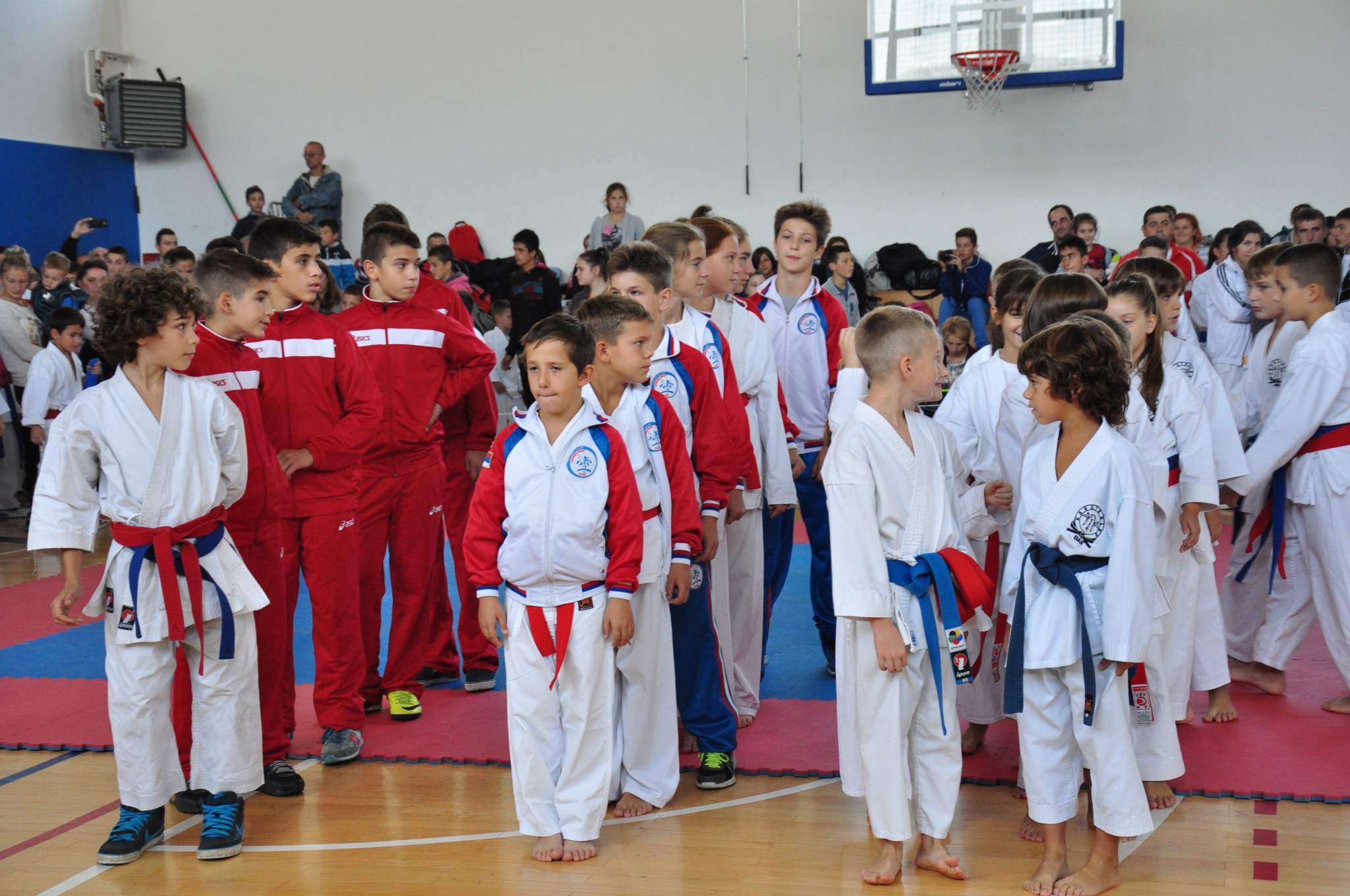October 2016, the status of non-material cultural good was issued to 14 traditional dances (folklore dances) practiced in the area of Kolašin Municipality during the end of 19th century, the beginning of 20th Century, and later on. That is a kind of archaic heritage revitalized by the members of Culture and Arts Association “Mijat Mašković” through the process of scientific research. Those are old dances which would be certainly forgotten without their intervention with qualified associates. Many of these folk dances were not performed for over seven decades, and some were completely unknown to the wider public. The dances proclaimed cultural goods are: šećer, šibljika, Što drijemaš, jadna, maglica, sitan tanac, Oj, Jovo, Jovo, leše gora, kaloper, đidije, Dobro veče, gospo, Stambol, U Vukića Brankovića, Glas se čuje u glavici i trusa.
The special aspect of the old dancing practice is that it was followed exclusively by the song or rhythm of the steps, therefore there were no instruments played. That is found in one of the key documents discovered by Branislav Jeknić, a transcription of the conversation from 1935, for Milman Parry Collection. In said conversation, Rade Danilović, a gusle (traditional Montenegrin instrument) player from Morača Village, describes almost all the dances proclaimed cultural goods. One sentence from the interview is especially striking: “Our instruments were the toungue, arms, and legs, and we had our songs which we…” Excellent historic facts are found in the book The Land of the Black Mountain: The Adventures of Two Englishmen in Montenegro (Wyon, Prance, 1905, London), where you can see the first photo of folk dance in Kolašin, taken probably around 1901. It also describes steps and vocal background, which completely matches all the reports from the terrain recorded even over a hundred years later.
